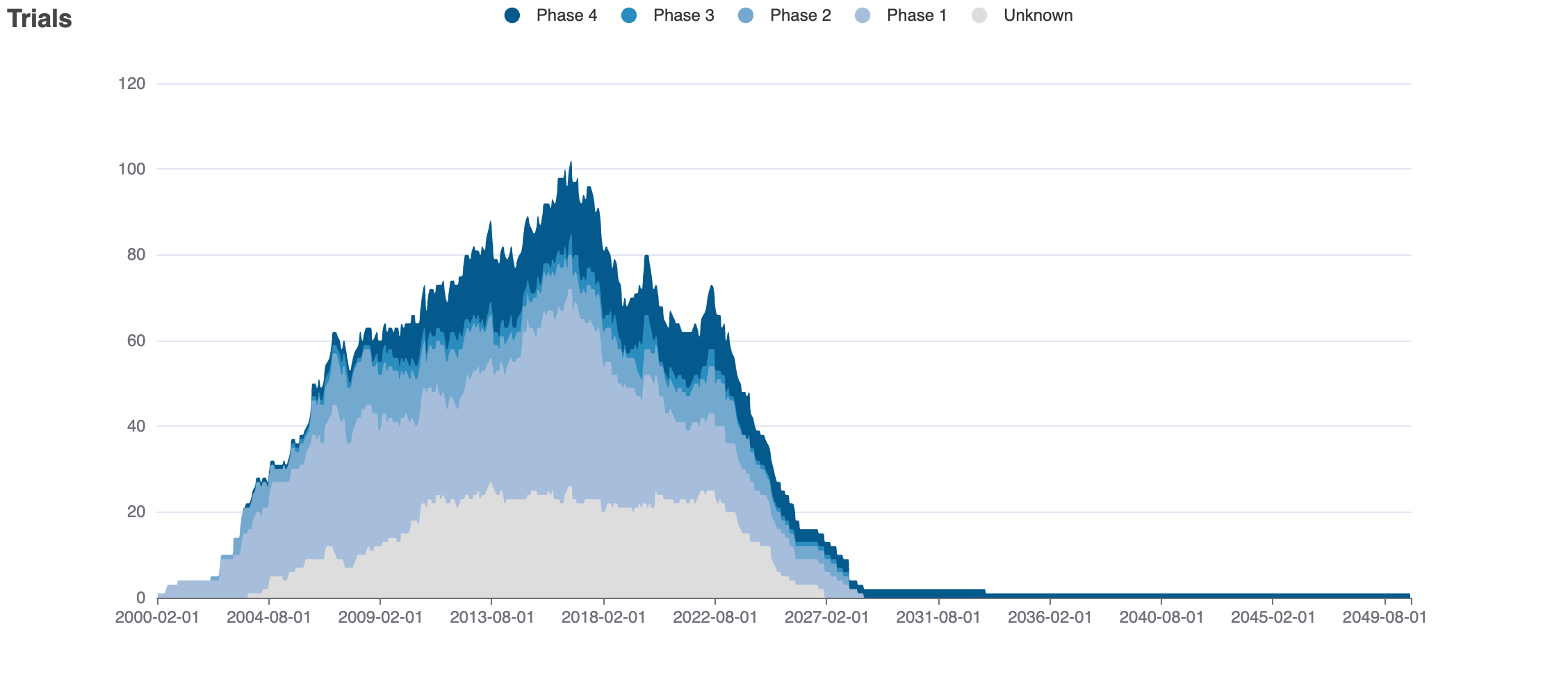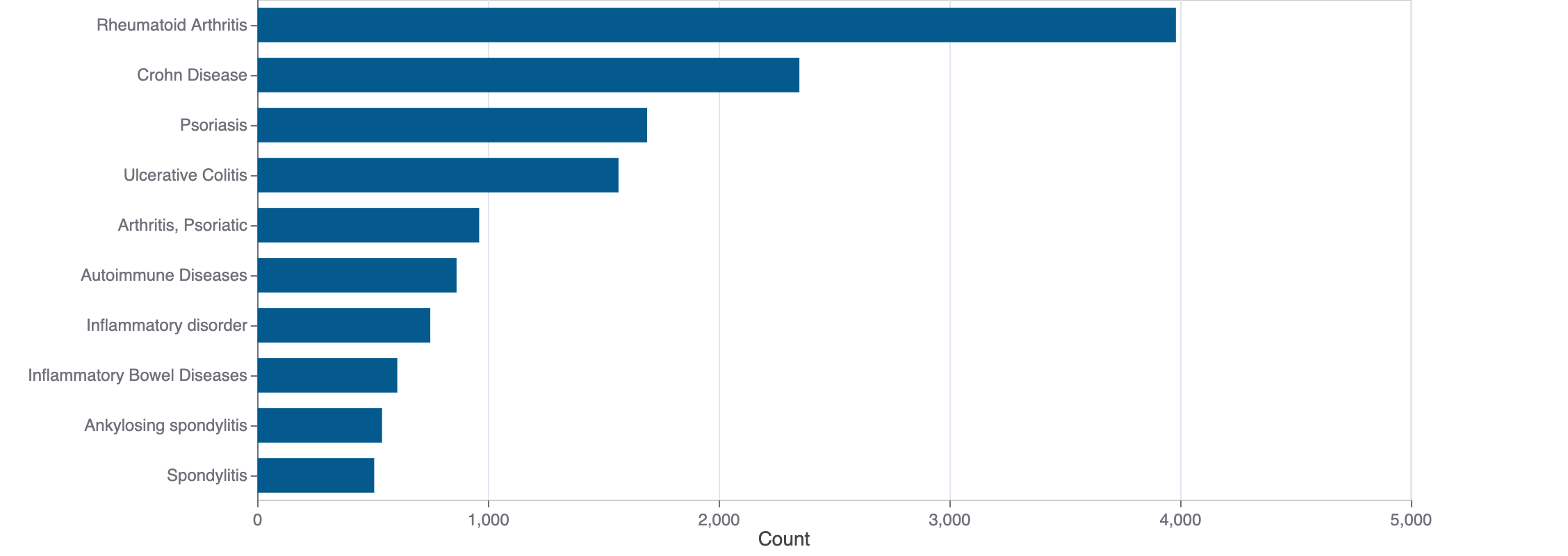Mirapex, Sifrol(pramipexole)
Mirapexin, Oprymea, Pramipexole, Sifrol (pramipexole) is a small molecule pharmaceutical. Pramipexole was first approved as Mirapex on 1997-07-01. It is used to treat depressive disorder and parkinson disease in the USA. It has been approved in Europe to treat parkinson disease and restless legs syndrome. The pharmaceutical is active against D(3) dopamine receptor and D(2) dopamine receptor.
Download report
Favorite
Events Timeline
Commercial
Clinical
Drug
Target
Variants
Financial
Trends
Safety
Events Timeline
5D
1M
3M
6M
YTD
1Y
2Y
5Y
Max
Events
FDA approval date
EMA approval date
Patent expiration date
Study first post date
Last update post date
Start date
Primary completion date
Completion date
Results first post date

Mock data
Subscribe for the real data
Subscribe for the real data
Commercial
Therapeutic Areas
Therapeutic Area | MeSH |
|---|---|
| nervous system diseases | D009422 |
| mental disorders | D001523 |
Trade Name
FDA
EMA
Pramipexole (discontinued: Mirapex, Pramipexole)
Drug Products
FDA
EMA
New Drug Application (NDA)
New Drug Application (NDA)
Abbreviated New Drug Application (ANDA)
Abbreviated New Drug Application (ANDA)
Pramipexole dihydrochloride
Tradename | Company | Number | Date | Products |
|---|---|---|---|---|
| MIRAPEX | Boehringer Ingelheim | N-020667 DISCN | 1997-07-01 | 7 products, RLD |
| MIRAPEX ER | Boehringer Ingelheim | N-022421 DISCN | 2010-02-19 | 7 products, RLD |
Hide discontinued
Labels
FDA
EMA
Brand Name | Status | Last Update |
|---|---|---|
| mirapex | New Drug Application | 2010-12-29 |
| pramipexole | ANDA | 2016-10-13 |
| pramipexole dihydrochloride | ANDA | 2025-11-17 |
| pramipexole dihydrochloride pramipexole dihydrochloride | ANDA | 2024-07-23 |
Indications
FDA
EMA
Indication | Ontology | MeSH | ICD-10 |
|---|---|---|---|
| parkinson disease | EFO_0002508 | D010300 | G20 |
| depressive disorder | EFO_1002014 | D003866 | F32.A |
Agency Specific
FDA
EMA
No data
HCPCS
No data
Clinical
Clinical Trials
175 clinical trials
View more details

Mock data
Subscribe for the real data
Subscribe for the real data
Indications Phases 4
Indication | MeSH | Ontology | ICD-10 | Ph 1 | Ph 2 | Ph 3 | Ph 4 | Other | Total |
|---|---|---|---|---|---|---|---|---|---|
| Parkinson disease | D010300 | EFO_0002508 | G20 | — | — | — | 1 | — | 1 |
Indications Phases 3
No data
Indications Phases 2
No data
Indications Phases 1
Indication | MeSH | Ontology | ICD-10 | Ph 1 | Ph 2 | Ph 3 | Ph 4 | Other | Total |
|---|---|---|---|---|---|---|---|---|---|
| Healthy volunteers/patients | — | — | — | 2 | — | — | — | — | 2 |
Indications Without Phase
No data
Epidemiology
Epidemiological information for investigational and approved indications
View more details
Drug
General
| Drug common name | Pramipexole |
| INN | pramipexole |
| Description | Pramipexole is a member of the class of benzothiazoles that is 4,5,6,7-tetrahydro-1,3-benzothiazole in which the hydrogens at the 2 and 6-pro-S-positions are substituted by amino and propylamino groups, respectively. It has a role as an antiparkinson drug, a dopamine agonist, an antidyskinesia agent and a radical scavenger. It is a member of benzothiazoles and a diamine. It is a conjugate base of a pramipexole(2+). |
| Classification | Small molecule |
| Drug class | — |
| Image (chem structure or protein) |  |
| Structure (InChI/SMILES or Protein Sequence) | CCCN[C@H]1CCc2nc(N)sc2C1 |
Identifiers
| PDB | — |
| CAS-ID | 104632-26-0 |
| RxCUI | — |
| ChEMBL ID | CHEMBL301265 |
| ChEBI ID | 8356 |
| PubChem CID | 119570 |
| DrugBank | DB00413 |
| UNII ID | 83619PEU5T (ChemIDplus, GSRS) |
Target
Variants
No data
Financial
Revenue by drug
$
€
£
₣
No data
Estimated US medical usage
Pramipexole
Total medical expenditures per year (USD, in millions)

Mock data
Subscribe for the real data
Subscribe for the real data
Number of persons purchased

Mock data
Subscribe for the real data
Subscribe for the real data
Number of purchases

Mock data
Subscribe for the real data
Subscribe for the real data
Refill frequency

Mock data
Subscribe for the real data
Subscribe for the real data
Price per prescription (USD)

Mock data
Subscribe for the real data
Subscribe for the real data
Tabular view
Trends
PubMed Central
Top Terms for Disease or Syndrome:

Mock data
Subscribe for the real data
Subscribe for the real data
Additional graphs summarizing 6,953 documents
View more details
Safety
Black-box Warning
No Black-box warning
Adverse Events
Top Adverse Reactions

Mock data
Subscribe for the real data
Subscribe for the real data
8,389 adverse events reported
View more details
© 2020-2025 Collaborative Drug Discovery Inc. (CDD) | Terms of Use